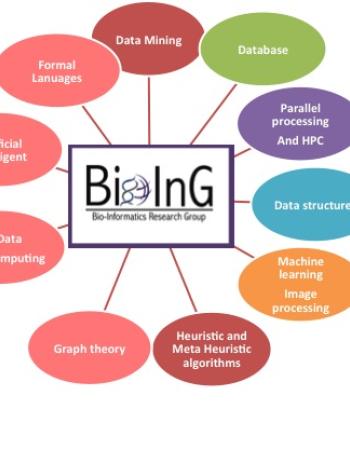Dr Ghada Hany Mahmoud Badr
Bioinformatics: Motifs (Localization and discovery, sequential and structural), Genome Scale (big data) sequence and structural analysis, RNA pairwise structure alignment, Genome Rearrangement, Sorting by Reversals, RNA-RNA secondary structure interaction, microarray gene expression, Next Generation Sequencing, Structural Variation, brain signal processing, Fourier Transformed Infra Red FTIR signal analysis for medical data, inference techniques for gene regulatory networks.
Machine learning and Machine Translation: Phrase-based statistical machine translation, decoding techniques, filtering techniques for models, learning techniques for optimizing weights in log-linear models. Quantitive rule-based classification models, feature selection (filter, wrapped and hybrid), regression models for learning entities weights for semantic data analysis.
Artificial Intelligence: Search techniques, Blind Search, Heuristic Search, Branch and Bound techniques, clustered beam search, Bio inspired algorithms, genetic-based algorithms.
Data Mining: classification, feature selection, frequent pattern mining, Hidden Markov Models, Bio inspired classification models, high dimensional data analysis, sequence alignment, structure alignment, text mining, Opinion Mining and Sentiment analysis, educational data mining, and social media analysis.
Pattern Recognition: Syntactic Pattern Recognition (PR), Approximate String Matching (ASM), Efficient Sequence Alignment techniques for dictionary-based models, Exact String Matching.
Advanced Data Structures: The design and analysis of many advanced data structures, Designing and implementing algorithms that use these advanced data-structures. Most data structures used or updated are used for storing strings and sequences. Design an efficient data structure for storing and retrieving Genome data. Self-adjusting data structures.
Information Retrieval: The design and analysis of information retrieval algorithms, Self-adjusting search techniques. Update these algorithms to be used efficiently for strings.
Database: Relational and Object Oriented Databases.

